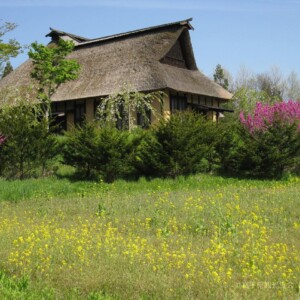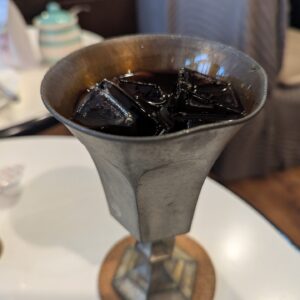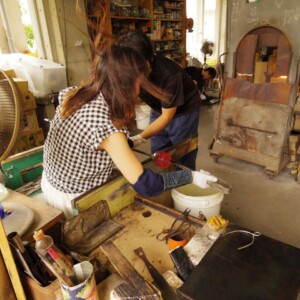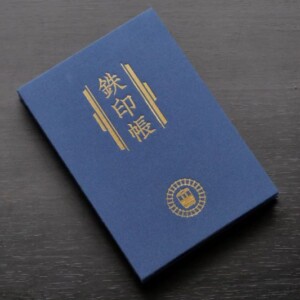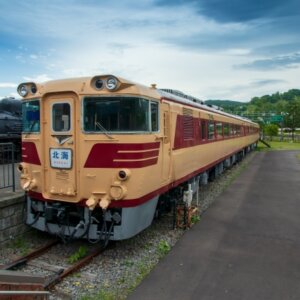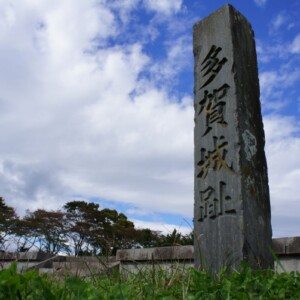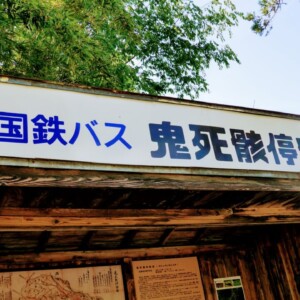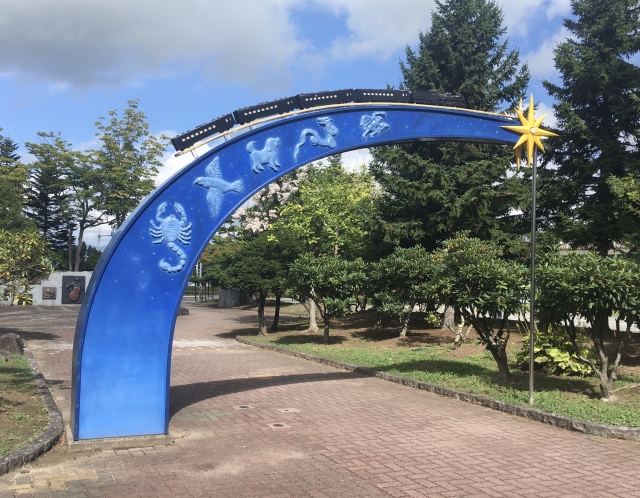
The 10th journey of the anime "That's Journey" is a trip to Iwate Prefecture, a place associated with Kenji Miyazawa [Iwate Prefecture]
table of contents
- 1 First, take the Tohoku Shinkansen to Shin-Hanamaki Station
- 2 Access to Hanamaki City
- 3 Galaxy Railroad?
- 4 Walk to the Miyazawa Kenji Memorial Museum
- 5 Walk to the scarecrow farm shop
- 6 Walk and take the bus to Marukan Building Dining Hall
- 7 Take the bus to Osawa Onsen
- 8 Hanamaki Electric Railway lead wire
- 9 Stroll through Hanamaki city
- 10 Walk, train and bus to Chusonji Temple
- 11 in conclusion
That's Journey " was broadcast
from April to June 2025. the protagonist, Chika Suzugamori, a female college student who aspires to be a manga artist, as she goes on a haphazard journey (a rough journey) to broaden her horizons.
The last two-thirds of the journey in the 10th episode, "Hometown of the Heart," takes place
Iwate Prefecture , primarily Hanamaki City In this article, we'll introduce the details of the journey and the transportation used.
Click here for an article about the first journey, "The First 1,225 Steps" (Aizuwakamatsu City, Fukushima Prefecture).
Click here for the article about the first half of the second trip, "It's not just for show! A trip for two" (Matsushima Town, Miyagi Prefecture).
Click here for the article about the first half of the 9th trip, "Finishing off with a visit to the hot springs and the first sunrise" (Aomori Prefecture).
The official anime website is here.
First, take the Tohoku Shinkansen to Shin-Hanamaki Station
Chika was requested to travel north in a survey of Dabetter (a social networking site in the story), takes her best friend Koyomi Hasunuma and gets off at
Shin-Hanamaki Station The date is January 31st, which seems cold for people in the Tokyo metropolitan area.
So, first, he travels to Shin-Hanamaki Station on
the Tohoku Shinkansen In the story, it is not stated which station he boarded the Shinkansen from, but based on past performance and the travel time, we can assume he boarded at Tokyo Station.
In the original manga, it is explicitly stated that he boarded from Tokyo Station.
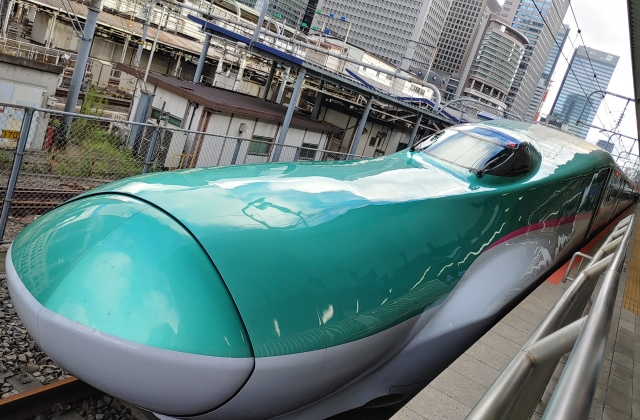
There are
Shinkansen trains that run directly from Tokyo Station to Shin-Hanamaki Station: " Hayabusa " and " Yamabiko " However, most "Yamabiko" trains run between Tokyo Station and Sendai Station, and there are only a few trains that go to Morioka Station in Iwate Prefecture.
"Hayabusa" is a type of train that stops at few stations, and there are only a few trains that stop at Shin-Hanamaki Station.
Combined, only about one train per hour that can travel from Tokyo Station to Shin-Hanamaki Station in a single trip .
And the journey in about two and a half hours would be impossible without the Hayabusa.
According to the JR timetable for March 2025, there is the Hayabusa 101 bound for Morioka, which departs Tokyo at 7:16 and arrives at Shin-Hanamaki at 9:50, and the Hayabusa 103 bound for Morioka, which departs Tokyo at 7:56 and arrives at Shin-Hanamaki at 10:38. After
this, the only trains stopping at Shin-Hanamaki Station are the Yamabiko, so it seems likely that the person took either Hayabusa 101 or 103.
Please refer to the article on
the first trip on how to purchase tickets for the Shinkansen that if you choose the Hayabusa, all cars are reserved seats and there are no unreserved seats.
The Hayabusa train that travels the furthest from Tokyo Station runs on the Hokkaido Shinkansen to Shin-Hakodate-Hokuto Station.
However, most Hayabusa trains that stop at Shin-Hanamaki Station run between Tokyo Station and Morioka Station
(there is only one Hayabusa train per day that runs between Sendai Station and Shin-Hakodate-Hokuto Station and stops at Shin-Hanamaki Station).
To get to Shin-Hakodate-Hokuto Station from stations like Shin-Hakodate-Hokuto or Shin-Aomori, you will almost always need to transfer at Morioka Station.
Access to Hanamaki City
Shin-Hanamaki Station was not there when the Tohoku Shinkansen line first opened in 1982.
It was established in 1985 in response to local requests and is known as a "petition station."
Station is located in the center of Hanamaki City , about 5km west of Shin-Hanamaki Station.
If you're traveling by train, Kamaishi Line from Shin-Hanamaki Station and arrive at Hanamaki Station in about 8 minutes.
However, the problem may not be the travel time, but the length of time you have to wait for a train on the Kamaishi Line.
There are periods during the day when there are no trains running for up to two hours.
If your destination is Hanamaki Station, it would be best
to get off the Tohoku Shinkansen at Kitakami Station or Morioka Station, which are next to Shin-Hanamaki Station, and transfer to the Tohoku Main Line to head for Hanamaki Station Tohoku Main Line trains run about once every 30 minutes, and the journey from Kitakami Station to Hanamaki Station takes about 10 minutes
(in fact, there are far more Hayabusa trains that stop at Kitakami Station than at Shin-Hanamaki Station).
Hanamaki Station is served by both the Tohoku Main Line, which runs north-south through the city, and the Kamaishi Line, which connects Hanamaki Station with Kamaishi Station on the Pacific coast. Hanamaki Station
is not only a central station in Hanamaki City, but also a very important station in terms of train operations, as the rapid "Hamayuri" train runs directly from Morioka Station on the Tohoku Main Line to Kamaishi Station via Hanamaki Station.
If you're traveling to Hanamaki City from afar by other means than the Shinkansen, you'll likely have to use an express bus or plane.
Hanamaki Airport (Iwate Hanamaki Airport)
the only airport in Iwate Prefecture Japan Airlines (JAL) operates direct flights from Sapporo (New Chitose), Osaka (Itami), and Fukuoka.
Fuji Dream Airlines (FDA) also operates direct flights from Nagoya (Komaki) and Kobe.
Starting October 26, 2025, FDA will also operate flights between Fukuoka and Hanamaki.
As an aside, international flights are also available from Taipei (Taoyuan), Taiwan.
International flights from Shanghai (Pudong), China are currently suspended.
From Hanamaki Airport, there are access buses to Hanamaki Airport Station, Morioka Station, Kitakami Station, Hanamaki Station, Shin-Hanamaki Station, etc.
Choose a bus depending on your destination.
Although there is a station called "Hanamaki Airport Station" on the JR Tohoku Main Line, it is about 4km from the station to the airport terminal building , so walking is not recommended.
Regarding express buses that run into Hanamaki City, there used to be an overnight bus called "Ihatov-go" that ran directly from Ikebukuro Station in Tokyo.
the only services remaining are the limousine bus that connects Morioka Station and Hanamaki Airport, as mentioned earlier, and the "Kenji Liner" that connects Sendai Station and Hanamaki Station
The Tohoku Expressway and the Kamaishi Expressway run
through Hanamaki City. The Tohoku Expressway connects the Tokyo metropolitan area with Aomori Prefecture, and the Kamaishi Expressway connects Hanamaki City with Kamaishi City. They
are like road versions of the Tohoku Main Line and Kamaishi Line.
These two expressways make it easy to access Hanamaki City by car from a wide range of areas.
Galaxy Railroad?

As Koyomi exits the west exit of Shin-Hanamaki Station, he discovers a steam locomotive monument in front of the station.
The monument is based on "Night on the Galactic Railroad," a novel written by
Miyazawa Kenji, a poet and children's story writer from Miyazawa Kenji's Galaxy Railroad is thought to be modeled after the Iwate Light Railway, which was the roots of the Kamaishi Line.
operated SL Ginga inspired by Night on the Galactic Railroad
There is also a monument to "Goosh the Cellist" in front of the station.
Walk to the Miyazawa Kenji Memorial Museum
Chika and Koyomi walked west from Shin-Hanamaki Station along the Kamaishi Line tracks, then headed south on National Route 456, crossing the Kamaishi Line railroad crossing. Their
destination was the Miyazawa Kenji Memorial Museum .
It was about 1.4 km from Shin-Hanamaki Station to the foot of the mountain where the museum is located, so it was easily accessible on foot.
However, there were 367 steps leading up to the museum, so the total distance from the station to the museum was about 1.7 km.
" Kenji Memorial Hall Entrance " nearby (at the foot of the mountain), and it is also possible to access the area by the Tsuchizawa Line of the Hanamaki City Community Bus, but the bus only runs six times a day, so you can't rely on it too much
. That said, if they came on "Hayabusa 103" which arrived in Shin-Hanamaki at 10:38, there is a bus departing from Shin-Hanamaki Station at 10:55, so it would be best to take that.
So, does that mean the two of them were on "Hayabusa 101" which arrived in Shin-Hanamaki at 9:50?
The museum introduces the life and works of Miyazawa Kenji,
as well as his personal belongings and handwritten manuscripts.
In the museum's parking lot is a restaurant called "Wildcat House Yamanekoken," named after the novel "The Restaurant of Many Orders."
Near the museum is Koshio Shrine, where you can enjoy a beautiful view.
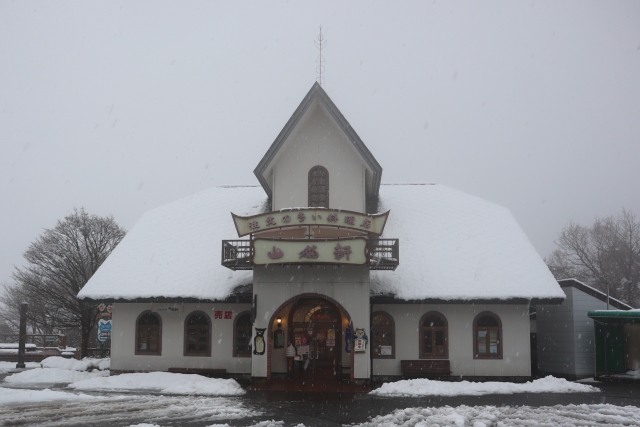
Information <Miyazawa Kenji Memorial Museum>
- Name: Miyazawa Kenji Memorial Museum
- Address: 1-36 Yazawa 1st District, Hanamaki City, Iwate Prefecture
- Opening hours 8:30-17:00
- Closed from December 28th to January 1st
- TEL 0198-31-2319
- URL Miyazawa Kenji Memorial Museum | Hanamaki City
Google Map
Walk to the scarecrow farm shop
After leaving the Miyazawa Kenji Memorial Museum, the two walk west along Prefectural Route 286, Towa Hanamaki Onsen Line. They
come across a banner that reads, "Fresh vegetables and baked pudding daifuku, Scarecrow, 600m ahead," and decide to visit the " Scarecrow ."
This scarecrow a direct sales store for agricultural products , and as written on the banner, baked pudding daifuku is a popular item.
Even so, just from the curtain to the scarecrow is a walk of 600m, but from the Miyazawa Kenji Memorial Museum to the scarecrow it is a whopping 3.6km.
If they didn't find the scarecrow and take a break, how long did the two men intend to walk continuously?
Google Map<Scarecrow>
Walk and take the bus to Marukan Building Dining Hall
visit Marukan Building in downtown Hanamaki by foot and bus
Since we boarded the bus near Hanamaki Airport and only a rough route was provided, it was a bit difficult to find information about the bus, but it appears to be the
Ishidoriya Line (Hanakita Routes 1, 3, and The route starts at Shiwaguchi bus stop in Ishidoriya-cho, Hanamaki City, and passes through Ishidoriya Station Exit, the west side of Hanamaki Airport, Hanamaki Station, City Hall, Hanamaki General Hospital, Fuji University Entrance, and Prefectural Chubu Hospital before arriving in front of Kitakami Station. It
appears the two people boarded the bus from Ishimochi bus stop southwest of Hanamaki Airport to Kamimachi bus stop in front of Marukan Building.
By the way, it's a 1.5km walk from Kazanshi to Ishimochi bus stop.
The total from Shin-Hanamaki Station to Miyazawa Kenji Memorial Museum to Kazanshi to Ishimochi bus stop is 6.8km.
That's a good walk.
On the sixth floor of the Marukan Building, there is a retro diner that evokes the Showa era, and its specialty is
a 10-tiered soft serve ice cream As depicted in the story, it is recommended to eat it with chopsticks.

Miyazawa Kenji's birthplace is located a little southeast of Marukan Building.
Information <Marukan Building Cafeteria>
- Name Marukan Building Dining Hall
- Address: Marukan Building 6F, 6-2 Uemachi, Hanamaki City, Iwate Prefecture
- Business hours (weekdays) 11:00-15:00 (last order 15:30)
- Business hours (holidays) 11:00-18:00 Last order (closes at 18:30)
- Closed Wednesdays
- TEL 0198-29-5588
- URL Hanamaki Marukan Building Dining Hall | Showa Retro Dining Hall Banquet
Google Map
Take the bus to Osawa Onsen
After enjoying the 10-stage soft serve, the two walked to Hanamaki Station (1.2 km away) and took a 30-minute bus ride to
the Osawa Onsen hot springs resort It's unclear whether the bus was a shuttle bus for the hot springs or a regular bus, but judging from the design of the bus, it seems more likely to be the former.
The free shuttle bus runs three times in the evening from Shin-Hanamaki Station and Hanamaki Station, and takes 30 minutes from Hanamaki Station.
Please note that reservations are required .
The Iwate Kotsu bus route is the Yuguchi Line (Hajime 1 or Hajime 2). It runs
from Hanamaki Station to the Shin-Hajime Onsen bus stop, passing through Osawa Onsen.
There aren't many buses, but there is about one bus per hour between 2pm and 7pm.
All buses listed on the timetable take 25 minutes.
Osawa Onsen has
a history of about 1,200 years Legend has it that Shogun Sakanoue no Tamuramaro was injured by a poisoned arrow, but his wounds were healed by bathing in Osawa's hot springs.
It is known that Miyazawa Kenji also used the Osawa Onsen hot springs.
The building is 200 years old, suggesting a truly long history.
The basic accommodation is one where you can stay overnight without meals, and in addition to eating at the restaurant, you can also bring your own ingredients and cook in the communal kitchen.
Information<Osawa Onsen Toujiya>
- Name: Osawa Onsen Toujiya
- Address: 181 Osawa, Yuguchi, Hanamaki City, Iwate Prefecture
- TEL 0198-25-2315
- URL Hot Springs | Osawa Onsen, Hanamaki City, Iwate Prefecture
Google Map
Hanamaki Electric Railway lead wire
The next morning, while walking along Prefectural Route 12, which passes in front of Osawa Onsen, Chika tells Koyomi that a train used to run on this road
line that passed in front of Osawa Onsen was called the
Lead Line and was operated by a company called Hanamaki Electric Railway The Lead Line ran from downtown Hanamaki to Nishi-Kaname Onsen Station, passing through hot spring resort stations such as Osawa Onsen Station and Kaname Onsen Station. The
current Yuguchi Line bus route can be said to be a replacement for the Lead Line, but Iwate Kotsu, the company that operates the buses, is in fact the successor to Hanamaki Electric Railway.
Hanamaki Electric Railway has another line called
the Hanamaki Onsen Line As the name suggests, this line connects the city of Hanamaki with Hanamaki Onsen Station, which is located further east than Osawa Onsen.
The lead line was abolished in 1969, and the Hanamaki Onsen Line was also abolished in 1972.
A train called "Deha 3" used by the Hanamaki Electric Railway is preserved in Zaimokucho Park in Hanamaki city.
The front of the train is quite long (or rather narrow) and is apparently called a horse-faced train.
After traveling south on Prefectural Route 12 for a while, the two board a bus at a stop called "Wataru."
Judging from the design of the bus, it can be inferred that they are now on an Iwate Prefectural Transportation bus (Yuguchi Line).
The distance from Osawa Onsen to the Watari stop is about 1.2 km.
These people really do a lot of walking.
Google Map <Zaimokucho Park>
Stroll through Hanamaki city
The two return to downtown Hanamaki by bus and explore the town.
Based on the map, it is assumed they get off the bus at either the "Bunka Kaikan-mae" or "Wakaba-cho" bus stop.
On our stroll, we walked down an alleyway that was difficult to pinpoint, then visited
Itachibei Inari Shrine and the " Walking with Kenji's Imagination Road Original Manchurian Chive Ramen Sakaeya Main Branch, located about 3km south .
This is a long-established ramen restaurant that was founded in 1960.
Manchuria, of course, refers to Manchuria (Manchuria) in northeastern China.
It all started when the founder was impressed by the ramen soup he ate in Manchuria.
The ramen contains chives, garlic sprouts pickled in soy sauce, pork belly, pickled ginger, and a generous amount of chili oil .
However, they do adjust the spiciness so that children can also eat it.
Information <Original Manchurian Chive Ramen Sakaeya Main Branch>
- Name: Original Manchurian Chive Ramen Sakaeya Main Store
- Address: 1000-1 Yamanokami, Hanamaki City, Iwate Prefecture
- Business hours: 11:00-15:00
- Closed: New Year's holiday
- TEL 0198-23-7775
- URL Original Manchurian Chive Ramen Sakaeya Main Branch | Delicious! Fast! Affordable! Original Manchurian Chive Ramen
Google Map
Walk, train and bus to Chusonji Temple
After that, Chika said she wanted to go to
the Golden Hall of Chusonji Temple Sakaeya Main Branch is about 5km away from both Hanamaki Station and Murasakino Station, which is next to it to the south, so the two headed south to Murasakino Station.
Just how many kilometers did they walk over the two days ?!
It must have been over 15km.
After walking that much, I'm sure my muscles would hurt.
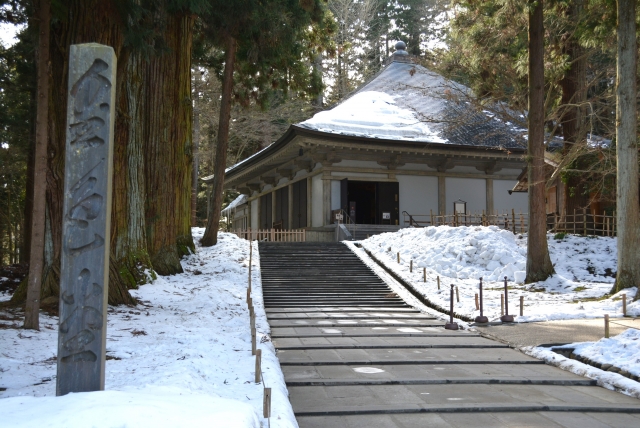
It's already past 2 PM, so you'll arrive at Murasakino Station around 4 PM.
At Murasakino Station, you can board the 4:40 PM train bound for Ichinoseki, arriving at Hiraizumi Station at 5:17 PM.
There are several bus routes that can take you to Chusonji Temple, but the one we'll use here is the Iwate Kotsu bus, the Ichinoseki Hiraizumi Line (Route 22).
We take the last bus bound for Sehara, which departs Hiraizumi Station at 5:45 PM, and in the story, we arrive at Chusonji at 5:50 PM (the timetable as of the time of writing this article lists it as 5:49 PM).
What appeared before Chika and Koyomi was Chusonji Temple
already closed and in complete darkness Visiting hours at Chusonji Temple are until 5:00 PM from spring to autumn, and until 4:30 PM in winter.
In the story, it was explained that they were out of luck once they arrived at Hiraizumi Station, but since it was the middle of winter on this day (February 1st), they were already out of luck before they even got on the train at Murasakino Station.
With no chance of entering Chusonji Temple, the 10th journey comes to an end.
Please note that you will not be able to return unless you take the bus going in the opposite direction departing at 18:04 .
The return bus is bound for Ichinoseki Station, and if you ride it to the last stop , you can board the Tohoku Shinkansen from Ichinoseki Station
Chusonji Temple is a Tendai Buddhist temple said to have been founded in 850 AD and is registered as a UNESCO World Heritage Site.
It is known for its ties to the Oshu Fujiwara clan.
The famous "Golden Hall" is, as its name suggests, a gorgeous building covered in gold leaf.
Information <Chusonji Temple>
- Name: Chusonji Temple
- Address: 202 Kinuzeki, Hiraizumi, Hiraizumi-cho, Nishiiwai-gun, Iwate Prefecture
- Visiting hours: March 1st to November 3rd: 8:30am - 5:00pm; November 4th to the end of February: 8:30am - 4:30pm
- TEL 0191-46-2211
- URL [Official] Sekizan Chusonji Temple [Hiraizumi, Iwate Prefecture, Tohoku Head Temple of the Tendai Sect]
Google Map
in conclusion
This concludes the article on the Tohoku region episode of the anime "Zatsu Tabi."
Although there were some scenes in which the characters took a bus, it seems that
the majority of the travel was done on foot If you are recreating this journey in real life, be careful not to push yourself too hard, and be careful of heatstroke depending on the season.
The original manga also features travels to Akita and Yamagata prefectures, so I would like to write an article about it if I get the chance.


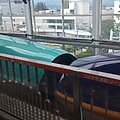







![Appears in the first episode of the anime "Zatsu Tabi - That's Journey"! Let's go to Aizuwakamatsu City [Fukushima Prefecture] 30948239_m](https://jp.neft.asia/wp-content/uploads/2025/05/30948239_m-150x150.jpg)
![A trip to Aomori Prefecture depicted in the 9th journey of the anime "That's Journey" [Aomori Prefecture] Enmei Jizo](https://jp.neft.asia/wp-content/uploads/2025/09/f7ab461e83edd7423e8730afd90212c9-150x150.jpg)
![Appearing in Episode 2 of the anime "That's Journey"! How do you get to Matsushima, one of Japan's Three Most Viewed Places? [Miyagi Prefecture] Matsushima](https://jp.neft.asia/wp-content/uploads/2025/07/27869135_s-150x150.jpg)
![[Iwate Prefecture] Let's make a pilgrimage to the spots that appear in the anime "Haikyu!!"! 955_co](https://jp.neft.asia/wp-content/uploads/2022/05/955_co-150x150.jpg)
![The specialty of Genbikei, "Flying Dango," is definitely worth a visit! Delicious activities! [Ichinoseki City, Iwate Prefecture] Genbikei bus stop](https://jp.neft.asia/wp-content/uploads/2017/04/IMG_5931-150x150.jpg)
![Bottle Don is the definitive Sanriku souvenir that looks delicious! [Iwate Prefecture] Bottle don (abalone, scallop, salmon roe)](https://jp.neft.asia/wp-content/uploads/2023/06/IMG_5048-150x150.jpg)
![Ryusen-no-no-no-no-no-no-no-no-no-no-no-no-no-no-no-no-no-no-no-no-no-no-no-no-no-no-no-no-no-no-no-no-no-no-no-no-no-no-no-no-no-no-no-no-no-no-no-no-no-no-no-no-no-no-no-no-no-no-no-no-no-no-no-no-no-no-no-no-no-no-no-no-no-no-no-no-no-no-no-no-no-no-no-no-no-no-no-no-no-no-no-no-no-no-no-no-no-no-no-no-no-no-no-no-no-no-no-no-no-no-no-no-no-no-no-no-no-no-no-no-no-no-no-no-no-no-no-no-no-no-no-no-no-no-no-no-no-no-no-no-no-no-no-no-no-no-no-no-no-no-no-no-no-no-no-no-no-no-no-no-no-no-no-no-no-no-no-no-no-no-no-no-no-no-no-no-no-no-no-no-no-no-no-no-no-no-no-no-no-no-no-no-no-no-no-no-no-no-no-no-no-no-no-no-no-no-no-no-no-no-no-no-no-no-no-no-no-no-no-no-no-no-no-no-no-no-no-no-no-no-no-no-no-no-no-no-no-no-no-no-no-no-no-no-no-no-no-no-no-no-no-no-no-no- [Iwate Prefecture] Ryusendo Cave (first underground lake)](https://jp.neft.asia/wp-content/uploads/2023/07/PXL_20230512_052246926.NIGHT_-150x150.jpg)
![[Series ②: The role of the previous nine years and the role of the second three years] The role of the previous nine years is from the truce to the battle again, and the Kokufu army is struggling Taga Castle Ruins](https://jp.neft.asia/wp-content/uploads/2023/11/a0b8b1213124e7a13c7308fa81e053a2-150x150.jpg)
